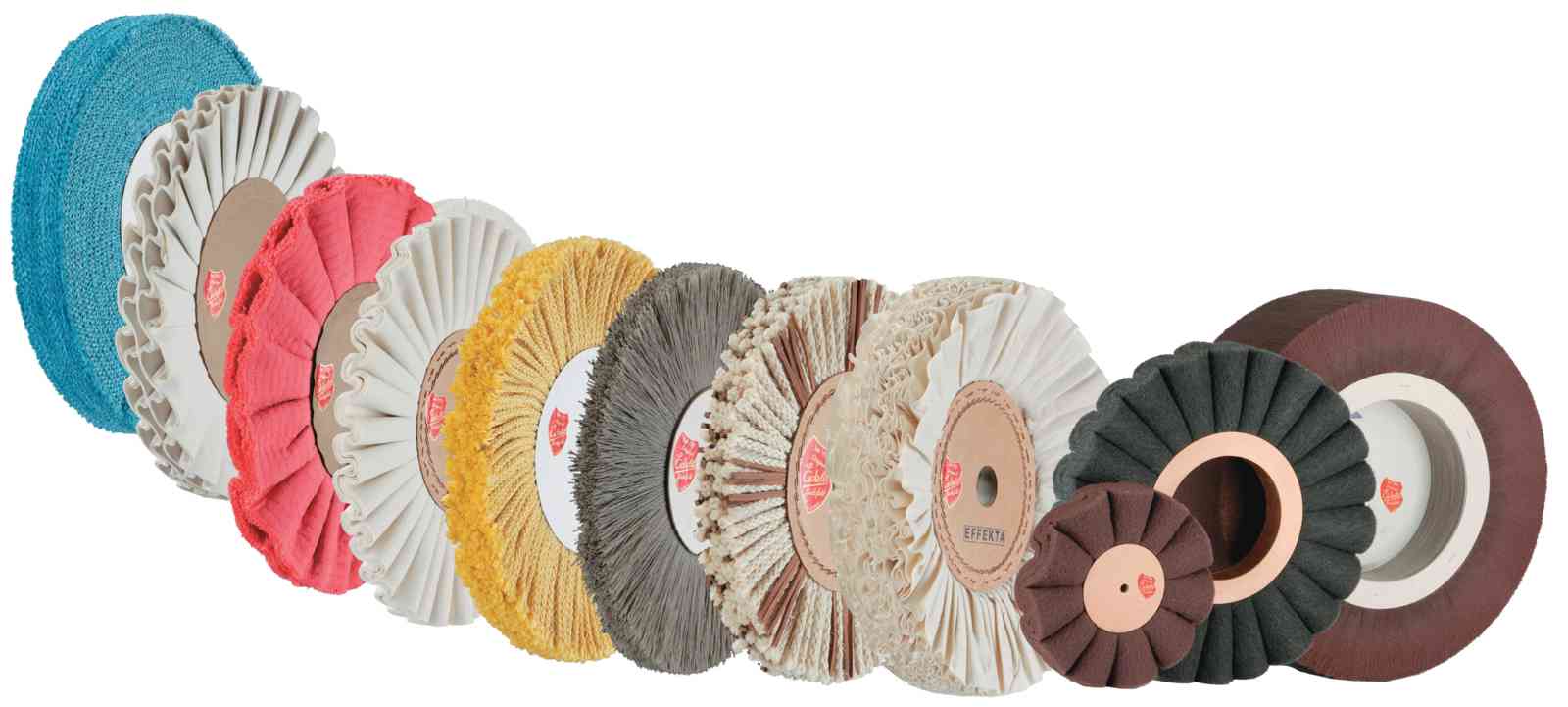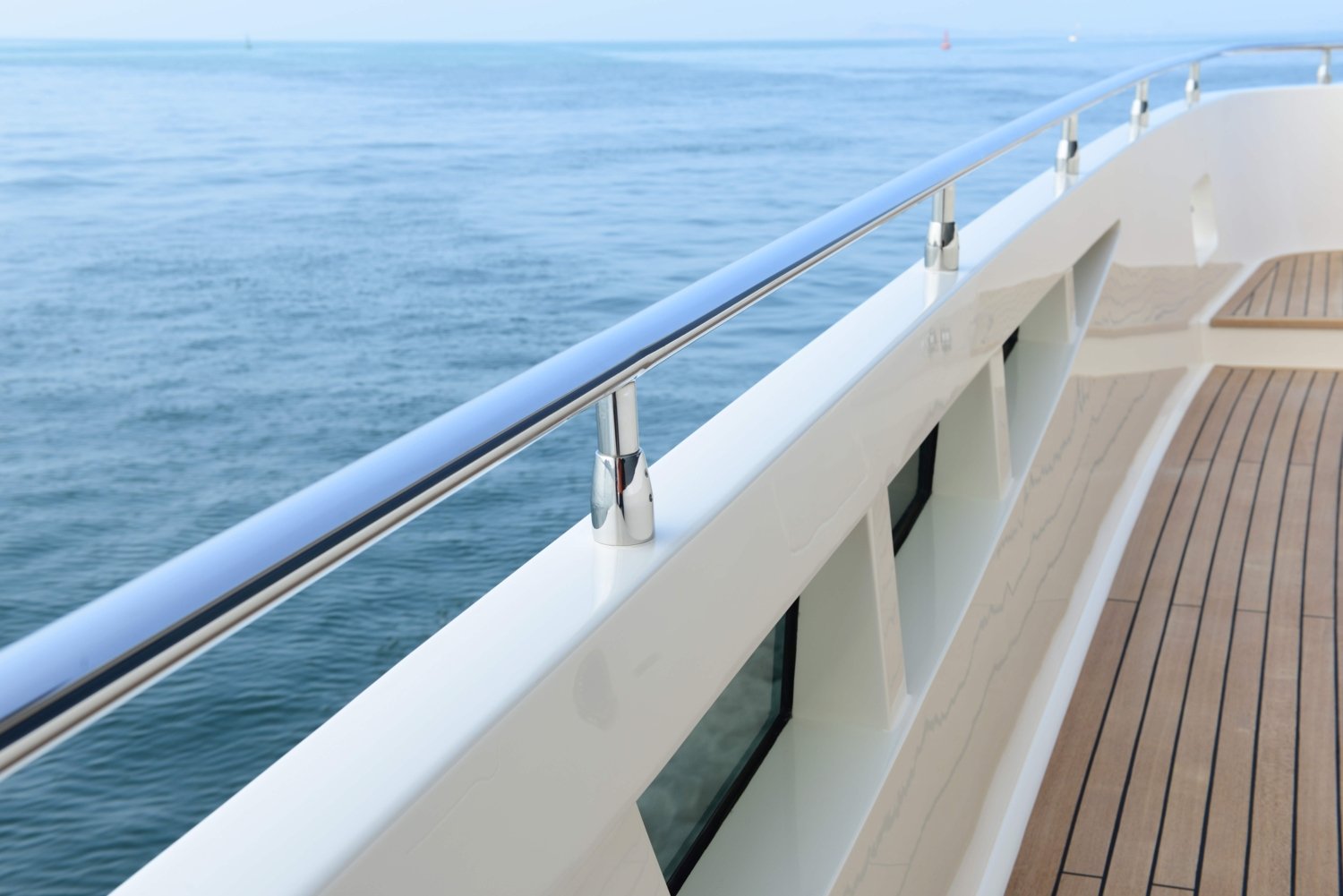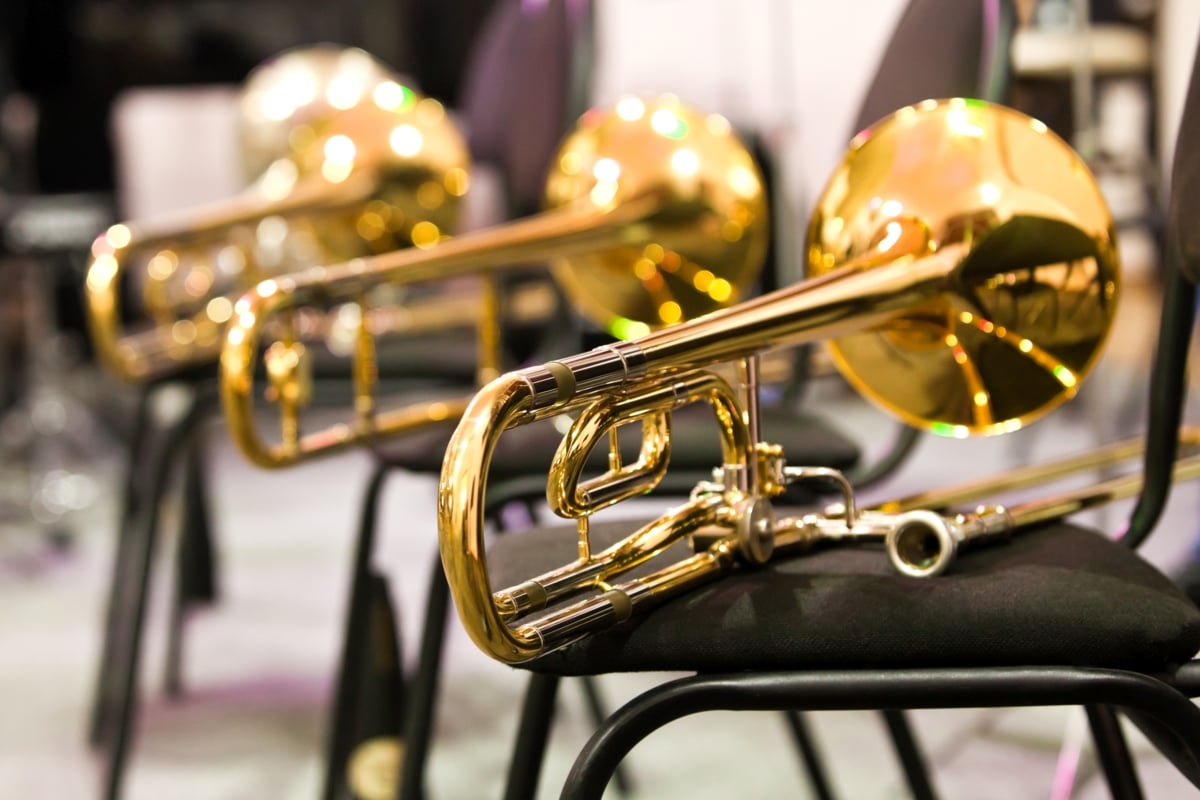Tips for Professional Buffing and Polishing
The terms "buffing" and "polishing" designate two technically different processes during surface finishing. Both processes are about reducing the roughness of the surfaces to a minimum without changing the work piece geometry that has previously been defined through cutting and grinding. Consequently, polishing and buffing must not remove significant amounts of material. In the following article we provide you with some essential tips to successfully finish ambitious buffing and polishing projects.
Polishing
Polishing is a finishing process that involves the use of an abrasive that’s firmly connected with a carrier such as sanding belts or abrasive non-woven. Polishing therefore is a shape cutting process to smooth surfaces, remove scratches and indentations, and scale the surface. The resulting polishing lines must be fine enough to be effectively removed during subsequent buffing.
Buffing
Buffing ist performed in subsequent steps with rotating wheels, which are usually made of natural materials and are impregnated with fine polishing pastes. It is assumed that buffing is essentially based on two distinct processes: On the one hand, the roughness peaks remaining from the previous polishing steps are gently removed with the help of fine abrasive grains. On the other hand, the work piece surface is deformed in microscopic areas by the abrasive grains striking it at high speed, which results in a smoothing of unevenness.
Buffing usually involves two major steps:
- Coarse cut buffing removes the fine polishing lines by applying high levels of energy until a smooth and homogeneous surface appearance is reached. The most suitable polishing tools for this process step usually are brushes or polishing discs manufactured of resistant natural raw materials such as Tampico or sisal fibers together with heavy-cut polishing compounds.
- Finish buffing is the last and finest step in surface finishing. The best results are achieved when using cotton or flanell polishing wheels together with a super-finish polishing compound, at low working pressure and with shortest possible process times. This final buffing step will level out any micro-fine lines, resulting in a bright luster finish.
Buffing Tools and Polishing Compounds
The main task of a buffing disc is to carry finest polishing agents and bring them in contact with the work piece surface at an adequate kinetic energy. These buffing compounds are usually applied to the rotating polishing tools either as a solid paste or as liquid emulsions.
In addition to a lubricating matrix mostly based on olefins and stearates, the active components of polishing pastes consist of micro-crystalline polishing grains of different sizes, strengths and crystal shapes. Only the correct interplay of kinetic energy, viscous paste matrix, increased temperature and the type of abrasives delivers the desired polishing effect, which ultimately ensures the desired improvement in the surface structure.

Types of Buffing Tools
- Rough scratches, grinding and processing marks from previous production steps are in a first step eliminated withcut-buffing wheels made of firm natural materials such as sisal fabric, sisal-cotton-mix or sisal cords
- The last scratches are removed using buffing discs made of firm cotton fabrics, in order reach a uniform high-gloss surface
- The finest possible mirror-gloss grades are finally reached with pleated buffing discs made of very soft and first-quality cotton flannel
- Matt or silky surfaces or elegantly brushed designs can be reached through polishing discs made of non-woven containing various types of abrasives
- Shank tools for manual drilling machines are used for post-processing in hard-to-reach areas of complex work pieces
Principles for Professional Buffing
- Buffing wheels must be carefully prepared and maintained before and during use
- Carefully determine the optimal cutting speed or speed of your polishing wheel for your polishing project
- Always buff in a criss-cross pattern, i.e. at right angles to the sanding / polishing direction of the previous work step
- The buffing must take place in the optimal temperature range, so the work piece surface must neither be too cold nor too warm
- Make sure that the workplace is extremely clean in order to achieve a flawless high-gloss finish
- A separate buffing wheel is required for each buffing compound used
- Buffing discs must never come into contact with dust, abrasion or polishing discs from the previous polishing steps. Just a few grains of a coarser buffing compound could destroy an already achieved buffing result
Buffing of Stainless Steel
The basis for buffing stainless steel is a fine and particularly uniform finish. Once errors have arisen due to negligent or incorrect sanding on the stainless steel surface, experience has shown that the subsequent buffing steps can no longer compensate for them.

We recommend cutting speeds of 30 - 35 m / s for buffing stainless steel. When buffing stainless steel, the working temperature should not exceed approx. 50 - 60 ° C. At higher temperatures, there is a risk of tarnishing and irreversible surface changes, which can often no longer be compensated for by further polishing. Furthermore, thin sheets of stainless steel tend to warp at higher temperatures.
The temperature development can be controlled via the selection of the wheel construction, the limitation of the contact times and the depth of immersion into the polishing wheel.
In order to achieve a fine mirror finish on stainless steel surfaces, several subsequent polishing steps must be carried out. It is crucial to continue to refine the polishing paste in the successive steps. The polishing paste should become a maximum of 100% finer from step to step (e.g. from grain 600 to grain 1200).
Buffing of Aluminium
Aluminum surfaces must be ground very carefully before polishing. Care should be taken to ensure that the grain size of the abrasive used is only increased in small steps. If grooves appear during later polishing, the final sanding before polishing was not fine enough.

For the cut-buffing of ground aluminum surfaces, very firm sisal-cotton discs are used together with a coarse cut-buffing compound. For the subsequent high-gloss polishing, chose a pleated flannel polishing discs together with a super-finish high-gloss compound.
We recommend high cutting speeds of 30 - 60 m/s for polishing aluminum. Since overheating of aluminum can lead to irreversible disturbance of the metal grid in connection with undesired oxidation, overheating of the metal must be absolutely avoided. If the metal surface has been disturbed due to overheating during polishing, this damage can usually only be repaired by repeating the grinding process.
Buffing of Brass
Brass is mainly polished in the manufacture of instruments, building decoration, furniture and bathroom fittings and in restoration. Expertly performed brass polishes give the metal an appearance that is very similar to gold. Unfortunately, however, brass tarnishes again over time, so the polishing must be repeated regularly.

To obtain mirror finish on brass, the surface is first sanded with P240 - P320 and then buffed in 2-3 subsequent steps. High-gloss finish on brass is usually best be obtained by standard buffing discs made of multiple cotton plies held together by quilting seams.
The recommended cutting speed for buffing discs on brass is approx. 30 - 45 m / s. As with all non-ferrous metals, particular care must be taken not to overheat brass. Otherwise, uneven surfaces can arise, which would finally prevent the desired deep shine of the material.